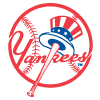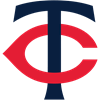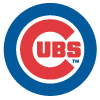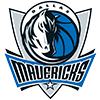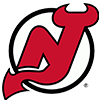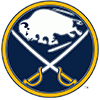The All-Star break offers a brief respite from the daily grind of the baseball season. That short pause gives fantasy players the chance to step back and reflect on how their teams have held up thus far. I'll be doing just that with this week's introductory section, offering a few quick thoughts and lessons learned for each of my teams. I know, nobody cares about your fantasy team, so feel free to jump down to the Risers section below, though I hope the lessons here are universally applicable, with something out there for any reader regarding at least one of these teams.
First, my standard, single-season leagues:
TGFBI: 14/15 -- Let's get the ugly one out of the way right away. TGFBI is an industry-wide contest featuring an overall component and 31 separate leagues. It's all for bragging rights, but I really wanted some of those bragging rights after posting solid, but not particularly noteworthy, results in my first three years. As such, I swung for the fences, taking Fernando Tatis and Jacob deGrom with my first two picks. As you can imagine, things aren't going to go well when you get absolutely zero value your first two picks through half a season. The rest of my moves haven't necessarily been great, either, but I'd already dug my grave at the draft.
Lesson: I'd say the lesson is to not take on this sort of risk with your first two picks, though I knew what I was doing when I
The All-Star break offers a brief respite from the daily grind of the baseball season. That short pause gives fantasy players the chance to step back and reflect on how their teams have held up thus far. I'll be doing just that with this week's introductory section, offering a few quick thoughts and lessons learned for each of my teams. I know, nobody cares about your fantasy team, so feel free to jump down to the Risers section below, though I hope the lessons here are universally applicable, with something out there for any reader regarding at least one of these teams.
First, my standard, single-season leagues:
TGFBI: 14/15 -- Let's get the ugly one out of the way right away. TGFBI is an industry-wide contest featuring an overall component and 31 separate leagues. It's all for bragging rights, but I really wanted some of those bragging rights after posting solid, but not particularly noteworthy, results in my first three years. As such, I swung for the fences, taking Fernando Tatis and Jacob deGrom with my first two picks. As you can imagine, things aren't going to go well when you get absolutely zero value your first two picks through half a season. The rest of my moves haven't necessarily been great, either, but I'd already dug my grave at the draft.
Lesson: I'd say the lesson is to not take on this sort of risk with your first two picks, though I knew what I was doing when I went all-in for upside. Maybe the lesson is simply to not delude yourself when pursuing an inadvisably risky strategy like that and to be prepared for things to collapse in spectacular fashion.
RotoWire Steak League: 9/14 -- This is an office auction league with the added wrinkle that the bottom half buys the top half a nice steak dinner at the end of the year. I was on the right side of the divide for most of the year but recently slipped to the wrong side, with my pitching mainly to blame.
Lesson: I thought my struggles in this league in previous seasons had been due to my typical stars-and-scrubs approach in auctions, so I changed things up this year and focused on acquiring a large number of second-tier players in pursuit of a safe, top-half finish. The results seem no different, so perhaps the lesson is to not overthink things and just draft the best roster you feel comfortable drafting.
Home Head-to-Head Categories League: 2/14 -- In contrast to the leagues full of fantasy writers above, everyone else in this league spends their time benefitting society in ways that don't involve poring over baseball stats all week. I felt confident in my ability to be the first to notice breakout pitchers in particular, so I went very hitter-heavy early in the draft to good effect, with pickups like Spencer Strider making up the deficit.
Lesson: Know your strengths relative to your leaguemates and set your draft strategy accordingly.
Next, my keeper and dynasty teams:
RotoWire Ottoneu League: 2/12 -- I've traded places with James Anderson atop the standings of this one throughout the year, with James holding a slight lead at the break. The starting pitcher categories are where I'm weakest (outside of strikeouts, which I always build my staff around), and I'll need a good second half there to catch up.
Lesson: Skew even harder than you might think toward pitching depth in dynasty leagues. I've spent much of the year with barely enough starters available while having extra hitters I can't use. If I didn't have Rowdy Tellez or Mike Yastrzemski and had a similarly talented starter instead, I may be in the lead.
RotoWire Staff Keeper League: 12/18 -- I was in contention until very late last year before falling off and finishing fourth. I kept my strong core heading into this season, but that left me with minimal money for upgrades at the auction. Unsurprisingly, my team has floundered in the middle of the standings for most of the year.
Lesson: Sometimes, it's okay to decide to sell early. I didn't do that here, and I've since lost the chance to turn Bryce Harper and Walker Buehler into big hauls. I should have known from the start that this team may not have what it takes to compete after adding virtually nothing in the auction, so I could have justified pulling the trigger earlier.
NL-Only Keeper League: 5/10 -- I won this league last year in my first season as a member after I hit on a ton of my bigger auction buys, but the team has occupied the middle part of the standings this year after a very mediocre auction performance. Having 11 players on the injured list in an NL-Only league doesn't help, either, with Ozzie Albies and Freddy Peralta the most notable. The top four places finish in the money, though, so I'll keep fighting and hope for a healthier second half.
Lesson: Maybe it's a cop-out, but it seems like the message here might simply be, "Sometimes it doesn't work out." The tough test will come this offseason when I try to give an honest assessment of where this roster sits.
Fantrax Dynasty League: 3/12 -- I finished a hard-fought second place in this league last year, and there's minimal turnover year-to-year with huge, 73-player rosters and an unlimited number of keepers. I've remained competitive, but the defending champion has held a comfortable lead for much of the season.
Lesson: I often slightly fade steals and saves to focus on the categories that overlap more closely. That sunk me last year, as I was excellent outside of those two, while the eventual winner was excellent all-around. A similar thing is happening this year, so the lesson seems to be that fades of any kind are tough to pull off in dynasty leagues, where the gap between the best and worst rosters can be quite large.
Finally, my draft-and-hold teams:
NFBC $150 Draft Champions: 1/15, 5/15, 9/15 -- I'm quite happy with how the first half has gone in my first foray into this format. Making 50 rounds of picks early in draft season and having all those rounds matter is a challenge I highly recommend. I picked up Ji-Man Choi very late in all three leagues, for example, and he's been a useful depth option in each. I also went for Alejandro Kirk in all three. (I had to work him in again this week somehow.)
Lesson: Don't be afraid to get your guys in as many places as possible if you're in multiple leagues.
Hopefully some of those lessons prove applicable in your leagues, and hopefully this exercise also shows that even us supposed "experts" have our fair share of duds. Feel free to share any lessons you've learned from the first half of this season. For now, we'll move onto our weekly dose of Risers and Fallers, with two inner-circle talents leading the way.
Note: Stats this week are accurate through Saturday's games instead of the usual Sunday, as I'm traveling Sunday.
RISERS
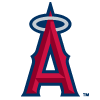 Shohei Ohtani, SP/DH, Angels: Last year, if you had Ohtani in a league where you could only use him as either a hitter or a pitcher in a given week, you probably deployed him as a hitter most of the time. As good as his 3.18 ERA and 29.3 percent strikeout rate were, it was tough to ever miss a week from a hitter who finished with 46 homers and 26 steals while reaching triple digits in runs and RBI. This year, the decision is a tougher one. He's still been excellent on the offensive side, though his wRC+ has dipped from 152 to 133, but his performance on the mound has reached a new level, especially recently. In each of his final four starts before the break, he struck out at least 10 batters. He allowed a total of one earned run over that stretch. He now owns a 2.38 ERA, good for eighth among pitchers who have thrown at least 80 innings, and a 35.4 percent strikeout rate, good for second among that same group. It's now a tough call knowing how to deploy him, though that's a great problem to have.
Shohei Ohtani, SP/DH, Angels: Last year, if you had Ohtani in a league where you could only use him as either a hitter or a pitcher in a given week, you probably deployed him as a hitter most of the time. As good as his 3.18 ERA and 29.3 percent strikeout rate were, it was tough to ever miss a week from a hitter who finished with 46 homers and 26 steals while reaching triple digits in runs and RBI. This year, the decision is a tougher one. He's still been excellent on the offensive side, though his wRC+ has dipped from 152 to 133, but his performance on the mound has reached a new level, especially recently. In each of his final four starts before the break, he struck out at least 10 batters. He allowed a total of one earned run over that stretch. He now owns a 2.38 ERA, good for eighth among pitchers who have thrown at least 80 innings, and a 35.4 percent strikeout rate, good for second among that same group. It's now a tough call knowing how to deploy him, though that's a great problem to have.
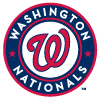 Juan Soto, OF, Nationals: It was always just a matter of time before Soto started to get going at the plate again. As recently as June 25, Soto was hitting just .215 with a .796 OPS, a figure many players would love to match but which was far below his lofty standards. There was reason not to panic even then, however, as his mediocre numbers came with a .211 BABIP, more than 100 points lower than his previous career low of .312. It's not as if his quality of contact deserved a low BABIP, either, as his 13.0 percent barrel rate up to that point was actually above the 12.3 percent mark he recorded over his first four seasons. Sure enough, Soto's luck has turned around, and he's started to post more typical numbers. From June 26 until now, he's hit .423/.595/.769. His barrel rate is actually slightly down but still strong, coming in at 10.9 percent, but his BABIP suddenly jumped to .415. He's also shown his typical absurd zone awareness, walking 22 times to go with just six strikeouts. Expect Soto to continue looking like his usual self in the second half.
Juan Soto, OF, Nationals: It was always just a matter of time before Soto started to get going at the plate again. As recently as June 25, Soto was hitting just .215 with a .796 OPS, a figure many players would love to match but which was far below his lofty standards. There was reason not to panic even then, however, as his mediocre numbers came with a .211 BABIP, more than 100 points lower than his previous career low of .312. It's not as if his quality of contact deserved a low BABIP, either, as his 13.0 percent barrel rate up to that point was actually above the 12.3 percent mark he recorded over his first four seasons. Sure enough, Soto's luck has turned around, and he's started to post more typical numbers. From June 26 until now, he's hit .423/.595/.769. His barrel rate is actually slightly down but still strong, coming in at 10.9 percent, but his BABIP suddenly jumped to .415. He's also shown his typical absurd zone awareness, walking 22 times to go with just six strikeouts. Expect Soto to continue looking like his usual self in the second half.
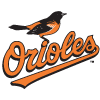 Adley Rutschman, C, Orioles: It's been a theme over the last couple seasons that rookie hitters have struggled initially upon promotion to the majors, with the gap between Triple-A and MLB looking quite large. Rutschman wasn't immune to that effect, as he struggled to a .143/.226/.196 line in his first 15 games after his late-May call-up. It didn't take long for the 2019 first overall pick to turn things around, however. Since June 10, he's hit .255/.336/.529 with five homers, dragging his wRC+ on the season up to an even 100. Rutschman may not be an elite hitter yet, but he seems to be a good bet to be at minimum an above-average one in the second half, which makes him already one of the best offensive catchers in the game. His results are backed by a solid 19.1 percent strikeout rate and a league average 8.0 percent barrel rate, and scouting reports on both his tools and his character have been universally glowing, so there's little reason to expect much of a drop-off in the second half.
Adley Rutschman, C, Orioles: It's been a theme over the last couple seasons that rookie hitters have struggled initially upon promotion to the majors, with the gap between Triple-A and MLB looking quite large. Rutschman wasn't immune to that effect, as he struggled to a .143/.226/.196 line in his first 15 games after his late-May call-up. It didn't take long for the 2019 first overall pick to turn things around, however. Since June 10, he's hit .255/.336/.529 with five homers, dragging his wRC+ on the season up to an even 100. Rutschman may not be an elite hitter yet, but he seems to be a good bet to be at minimum an above-average one in the second half, which makes him already one of the best offensive catchers in the game. His results are backed by a solid 19.1 percent strikeout rate and a league average 8.0 percent barrel rate, and scouting reports on both his tools and his character have been universally glowing, so there's little reason to expect much of a drop-off in the second half.
 Spencer Strider, SP, Atlanta: When Strider was knocked around for six runs in 3.2 innings by the Giants back on June 21, it would have been reasonable to take that as a sign that he was starting to come down to earth after a brilliant start. Prior to that point, he'd recorded a 2.22 ERA and 38.9 percent strikeout rate in 11 relief appearances before following that up with a 2.75 ERA and 38.3 percent strikeout rate in his first four starts. Coming down to earth was the last thing on Strider's mind, however, as he rebounded from the setback with his best stretch yet, allowing just two runs across his next four starts while striking out a ludicrous 43.2 percent of opposing batters. The extent of Strider's strikeout prowess is almost impossible to overstate. If he can get to even 100 innings while maintaining his season-long 38.9 percent mark, he'll rank second all-time among pitchers to reach that threshold, with Gerrit Cole's record-setting 39.9 percent mark from 2019 looking hardly unattainable.
Spencer Strider, SP, Atlanta: When Strider was knocked around for six runs in 3.2 innings by the Giants back on June 21, it would have been reasonable to take that as a sign that he was starting to come down to earth after a brilliant start. Prior to that point, he'd recorded a 2.22 ERA and 38.9 percent strikeout rate in 11 relief appearances before following that up with a 2.75 ERA and 38.3 percent strikeout rate in his first four starts. Coming down to earth was the last thing on Strider's mind, however, as he rebounded from the setback with his best stretch yet, allowing just two runs across his next four starts while striking out a ludicrous 43.2 percent of opposing batters. The extent of Strider's strikeout prowess is almost impossible to overstate. If he can get to even 100 innings while maintaining his season-long 38.9 percent mark, he'll rank second all-time among pitchers to reach that threshold, with Gerrit Cole's record-setting 39.9 percent mark from 2019 looking hardly unattainable.
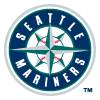 Paul Sewald, RP, Mariners: Seattle may prefer a committee approach to the ninth inning, but Sewald has enough of an edge at the front of that committee that the difference between his role and an official closer tag has become increasingly minimal. He's recorded eight of the Mariners' last 12 saves, including two in one day Wednesday against Washington. Sewald's numbers since his move to Seattle last season easily make him closer material, and he'd be good enough to earn the official title for most teams that use a traditional setup. Among relievers who have thrown at least 50 innings over the last two seasons, Sewald's 36.7 percent strikeout rate ranks seventh, and his 7.8 percent walk rate is better than four of the six pitchers ahead of him. Despite theoretically being part of a committee, the veteran righty is tied for fifth since the start of June with 10 saves, and those excellent underlying numbers will keep him relevant even if his share of Seattle's saves starts to slip.
Paul Sewald, RP, Mariners: Seattle may prefer a committee approach to the ninth inning, but Sewald has enough of an edge at the front of that committee that the difference between his role and an official closer tag has become increasingly minimal. He's recorded eight of the Mariners' last 12 saves, including two in one day Wednesday against Washington. Sewald's numbers since his move to Seattle last season easily make him closer material, and he'd be good enough to earn the official title for most teams that use a traditional setup. Among relievers who have thrown at least 50 innings over the last two seasons, Sewald's 36.7 percent strikeout rate ranks seventh, and his 7.8 percent walk rate is better than four of the six pitchers ahead of him. Despite theoretically being part of a committee, the veteran righty is tied for fifth since the start of June with 10 saves, and those excellent underlying numbers will keep him relevant even if his share of Seattle's saves starts to slip.
 Brett Martin, RP, Rangers: Like Sewald, Martin has also seen a sudden uptick in save chances, though his comes as part of an official role change, with the Rangers electing to remove Joe Barlow from the closer role. Martin recorded the team's next three saves after Barlow was taken out of the firing line, and while Garrett Richards grabbed one Wednesday against Oakland, that came after Martin had pitched on back-to-back days. While Martin may have one advantage over Sewald in the fact that his team prefers a true closer, he isn't nearly the same level of talent, though that's not to say he's a bad pitcher. His 2.61 ERA is an overachievement according to his 3.37 xFIP and 3.40 SIERA, but he'd still be a useful piece if he produced an ERA around 3.40 the rest of the way. He doesn't have a traditional closer profile, however, as his 19.8 percent strikeout rate is sub-par. He instead gets the job done via the groundball, posting a 57.8 percent groundball rate this year and a mark of at least 51 percent in each of his four big-league seasons.
Brett Martin, RP, Rangers: Like Sewald, Martin has also seen a sudden uptick in save chances, though his comes as part of an official role change, with the Rangers electing to remove Joe Barlow from the closer role. Martin recorded the team's next three saves after Barlow was taken out of the firing line, and while Garrett Richards grabbed one Wednesday against Oakland, that came after Martin had pitched on back-to-back days. While Martin may have one advantage over Sewald in the fact that his team prefers a true closer, he isn't nearly the same level of talent, though that's not to say he's a bad pitcher. His 2.61 ERA is an overachievement according to his 3.37 xFIP and 3.40 SIERA, but he'd still be a useful piece if he produced an ERA around 3.40 the rest of the way. He doesn't have a traditional closer profile, however, as his 19.8 percent strikeout rate is sub-par. He instead gets the job done via the groundball, posting a 57.8 percent groundball rate this year and a mark of at least 51 percent in each of his four big-league seasons.
FALLERS
 Jared Walsh, 1B, Angels: The Angels' collapse has involved far more than just Walsh, but he certainly hasn't done his part to help halt the skid. His last multi-hit game and his last extra-base hit came back on June 21. Since then, he's hit just .125/.152/.125 in 19 games. His plate discipline has evaporated, as he owns a 34.8 percent strikeout rate and a 3.0 percent walk rate over that stretch. When he's managed to make contact, he hasn't recorded a single barrel. Any reason for optimism for Walsh in the second half rests on his solid .265/.312/.486 slash line prior to his recent slump, but even that performance came with some red flags, as both his 28.6 percent strikeout rate and 5.3 percent walk rate represented steps in the wrong direction from his 2021 numbers. Given that Walsh has only ever had one good full season (plus 32 strong games in 2020), there's plenty of reason to worry that he won't have a significant enough rebound after the break.
Jared Walsh, 1B, Angels: The Angels' collapse has involved far more than just Walsh, but he certainly hasn't done his part to help halt the skid. His last multi-hit game and his last extra-base hit came back on June 21. Since then, he's hit just .125/.152/.125 in 19 games. His plate discipline has evaporated, as he owns a 34.8 percent strikeout rate and a 3.0 percent walk rate over that stretch. When he's managed to make contact, he hasn't recorded a single barrel. Any reason for optimism for Walsh in the second half rests on his solid .265/.312/.486 slash line prior to his recent slump, but even that performance came with some red flags, as both his 28.6 percent strikeout rate and 5.3 percent walk rate represented steps in the wrong direction from his 2021 numbers. Given that Walsh has only ever had one good full season (plus 32 strong games in 2020), there's plenty of reason to worry that he won't have a significant enough rebound after the break.
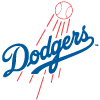 Chris Taylor, 2B/SS/OF, Dodgers: Taylor's success at the plate over the past several seasons has come despite a slight strikeout problem. In each of the previous five seasons, he struck out between 25.0 percent and 29.5 percent of the time, but he managed a wRC+ between 106 and 130 in all of those years. There's a limit to how often a player can whiff while remaining a capable hitter, however, and Taylor may be in the process of finding it. A particularly rough recent stretch has seen Taylor strike out in 41.2 percent of his plate appearances over his last 26 games, giving him a 35.4 percent strikeout rate for the year. While he's still a slightly above-average hitter by wRC+, which sits at 106, he doesn't have the pop required to maintain that number alongside a strikeout rate this high. His 11.1 percent barrel rate is a fine mark, but the other qualified hitters with above-average batting lines despite strikeout rates north of 30 percent (Kyle Schwarber, Eugenio Suarez, Patrick Wisdom and Luke Voit) all have barrel rates above 14 percent.
Chris Taylor, 2B/SS/OF, Dodgers: Taylor's success at the plate over the past several seasons has come despite a slight strikeout problem. In each of the previous five seasons, he struck out between 25.0 percent and 29.5 percent of the time, but he managed a wRC+ between 106 and 130 in all of those years. There's a limit to how often a player can whiff while remaining a capable hitter, however, and Taylor may be in the process of finding it. A particularly rough recent stretch has seen Taylor strike out in 41.2 percent of his plate appearances over his last 26 games, giving him a 35.4 percent strikeout rate for the year. While he's still a slightly above-average hitter by wRC+, which sits at 106, he doesn't have the pop required to maintain that number alongside a strikeout rate this high. His 11.1 percent barrel rate is a fine mark, but the other qualified hitters with above-average batting lines despite strikeout rates north of 30 percent (Kyle Schwarber, Eugenio Suarez, Patrick Wisdom and Luke Voit) all have barrel rates above 14 percent.
 MacKenzie Gore, SP, Padres: After two seasons in which Gore didn't look like anything close to the prospect he was supposed to be, it was quite exciting seeing the young lefty begin the season looking very much like one of the game's best young talents early this year. In his first nine outings, he cruised to a 1.50 ERA and a 30.0 percent strikeout rate. Since then, however, the wheels have fallen off in dramatic fashion. Over his last five starts, he's walked 16 batters while striking out just 13, a combination that's led unsurprisingly to a 10.18 ERA and 2.26 WHIP. In a worrisome development, Gore's velocity is down significantly, sitting at 93.6 mph over those five starts after he averaged 95.4 mph up to that point. Such a drop often hints at an injury, though for now the Padres are merely temporarily moving him to the bullpen. It's possible he's already getting worn down, as he's thrown 73.1 innings this season after throwing just 50.1 last year and none in 2020.
MacKenzie Gore, SP, Padres: After two seasons in which Gore didn't look like anything close to the prospect he was supposed to be, it was quite exciting seeing the young lefty begin the season looking very much like one of the game's best young talents early this year. In his first nine outings, he cruised to a 1.50 ERA and a 30.0 percent strikeout rate. Since then, however, the wheels have fallen off in dramatic fashion. Over his last five starts, he's walked 16 batters while striking out just 13, a combination that's led unsurprisingly to a 10.18 ERA and 2.26 WHIP. In a worrisome development, Gore's velocity is down significantly, sitting at 93.6 mph over those five starts after he averaged 95.4 mph up to that point. Such a drop often hints at an injury, though for now the Padres are merely temporarily moving him to the bullpen. It's possible he's already getting worn down, as he's thrown 73.1 innings this season after throwing just 50.1 last year and none in 2020.
 Dane Dunning, SP, Rangers: Throughout last season and the early part of this year, I've liked Dunning as one of my go-to boring but acceptable pitchers who help me round out a fantasy rotation. His strikeout numbers have typically been right around league average, but that's been enough when combined with his above-average groundball rate to make him usable in most matchups. Through his first 11 starts this year, he remained that guy. His 4.11 ERA wasn't great, but his underlying numbers, including a 24.0 percent strikeout rate and 7.6 percent walk rate, suggested things were about to improve, potentially bringing his ERA in line with his 3.35 xFIP. Instead, he's gotten much worse across his last seven outings. His ERA has only jumped to 4.98, but his xFIP has jumped nearly two runs to 5.29. He's only struck out 13.2 percent of opposing batters over that stretch and has issued walks at a 10.7 percent clip. Considering that he was never more than serviceable when things were going well, he's very much droppable outside of AL-Only leagues at this point even if the ankle issue which sent him to the injured list proves minor.
Dane Dunning, SP, Rangers: Throughout last season and the early part of this year, I've liked Dunning as one of my go-to boring but acceptable pitchers who help me round out a fantasy rotation. His strikeout numbers have typically been right around league average, but that's been enough when combined with his above-average groundball rate to make him usable in most matchups. Through his first 11 starts this year, he remained that guy. His 4.11 ERA wasn't great, but his underlying numbers, including a 24.0 percent strikeout rate and 7.6 percent walk rate, suggested things were about to improve, potentially bringing his ERA in line with his 3.35 xFIP. Instead, he's gotten much worse across his last seven outings. His ERA has only jumped to 4.98, but his xFIP has jumped nearly two runs to 5.29. He's only struck out 13.2 percent of opposing batters over that stretch and has issued walks at a 10.7 percent clip. Considering that he was never more than serviceable when things were going well, he's very much droppable outside of AL-Only leagues at this point even if the ankle issue which sent him to the injured list proves minor.











